Tsuguharu Foujita (1886-1962)
Get a Foujita Certificate of Authenticity for your painting (COA) for your Foujita drawing.
For all your Foujita artworks you need a Certificate of Authenticity (COA) in order to sell, to insure or to donate for a tax deduction.
Getting a Foujita Certificate of Authenticity (COA) is easy. Just send us photos and dimensions and tell us what you know about the origin or history of your Foujita painting or drawing.
If you want to sell your Foujita painting or drawing use our selling services. We offer Foujita selling help, selling advice, private treaty sales and full brokerage.
We have been authenticating Foujita and issuing certificates of authenticity since 2002. We are recognized Foujita experts and Foujita certified appraisers. We issue COAs and appraisals for all Foujita artworks.
Our Foujita paintings and drawings authentications are accepted and respected worldwide.
Each COA is backed by in-depth research and analysis authentication reports.
The Foujita certificates of authenticity we issue are based on solid, reliable and fully referenced art investigations, authentication research, analytical work and forensic studies.
We are available to examine your Foujita painting or drawing anywhere in the world.
You will generally receive your certificates of authenticity and authentication report within two weeks. Some complicated cases with difficult to research Foujita paintings or drawings take longer.
Our clients include Foujita collectors, investors, tax authorities, insurance adjusters, appraisers, valuers, auctioneers, Federal agencies and many law firms.
We perform Tsuguharu Foujita art authentication. appraisal, certificates of authenticity (COA), analysis, research, scientific tests, full art authentications. We will help you sell your Tsuguharu Foujita or we will sell it for you.


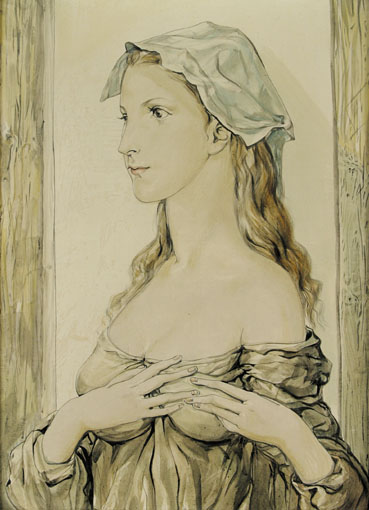
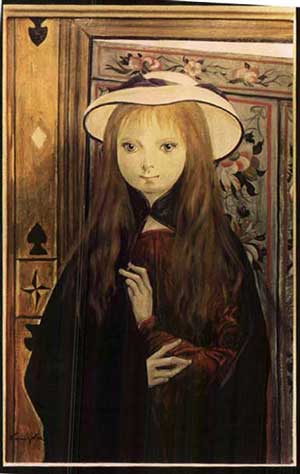
Japan in WWI was an ally of France and Belgium, and Foujita’s loyalty and sociability endeared him to the establishment as much as the avant-garde. In the 1920’s he was awarded state honors by both France and Belgium. In fact, he was far more popular than many of the luminaries of Paris who are now far better known. Foujita was also commercially more successful in the 1920’s than most of his contemporaries. He was to most people a loveable eccentric; exotic, but unthreatening. His name in Japanese means ‘field of Wisteria and Peace’, yet, the life he led was certainly not quiet and peaceful. In fact he was one of the more eccentric artists of the time in Paris. His hair was cut in the style of an Egyptian statue; he wore earrings, dressed in tunics and had a tattoo around his wrist. He even wore a lampshade sometimes rather than a hat!
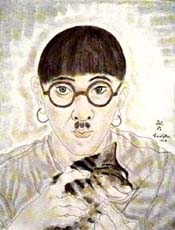
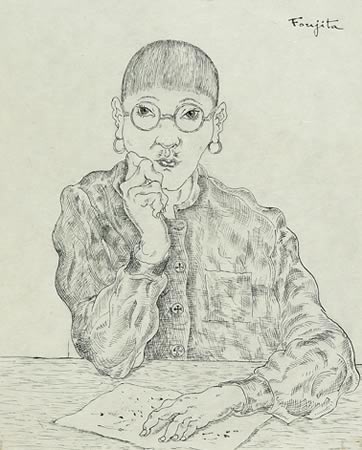
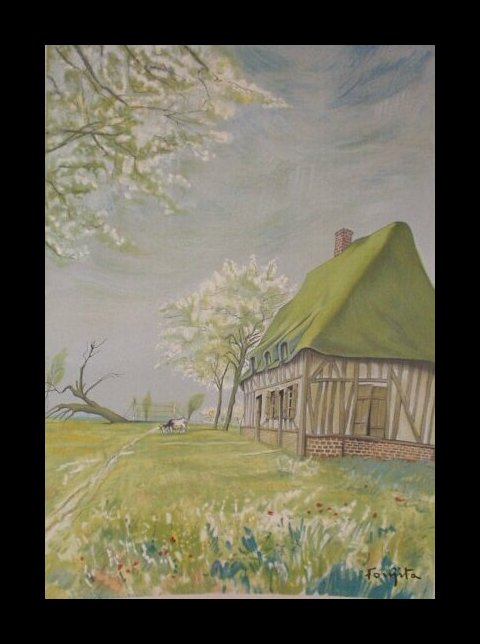
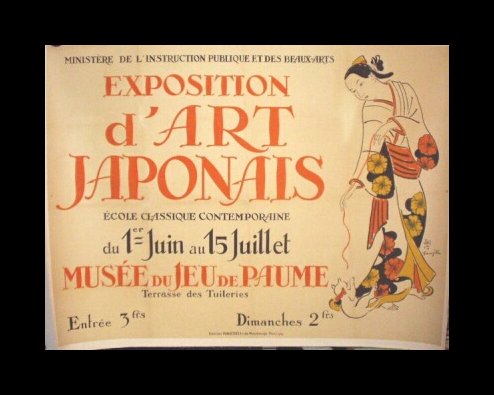
In 1931 he headed for Latin America, where he spent the next six years. Enormously popular there, he was one of their first art superstars. Ever open to new influences, his work in this period takes on something of the palette and style of Mexican artists such as Diego Rivera, which no doubt endeared him further to the Latin Americans. In 1937 he returned to Japan where he was again acclaimed, not least as a European success story: local boy matches the metropolitan greats. By 1939 he was back in Europe. Later, his war art showed compassion for the suffering Japanese as they were crushed by the advancing allies. He was criticized both for being too patriotic and not patriotic enough. Disillusioned, he never visited Japan again after 1950. Foujita became a naturalized Frenchman in 1955 and converted to Catholicism in 1959.

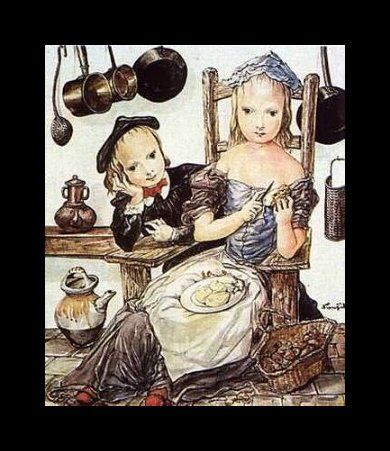

Today, Foujita is seen as somewhat as a lightweight, decorative artist, though his popularity in France itself has not waned. Straddling two worlds, Foujita was in fact remarkably inventive, not merely in matters of style but also technique. He experimented with watercolor, inventing a unique blend of crushed oyster shell and color to produce the milky skin tones for which he is still famous today. Stylistically, he amalgamated Japanese calligraphic and ukiyo-e techniques with European Modernism, flattening or eliminating perspective while maintaining a silky sinuous line. Foujita is probably overdue for reevaluation, and in any case he would not regard the label “decorative” as derogatory.
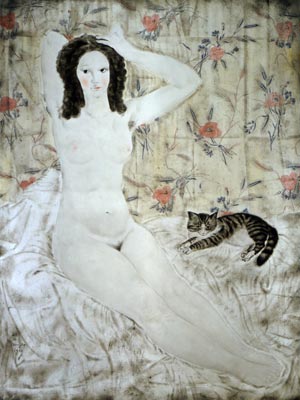
The evolution of Foujita’s cats can be seen below. The very traditional Japanese/Chinese approach is evident throughout, although later versions are more sparing and linear and hence appear more European. For instance the 1934 version is almost devoid of Western influence, whereas the 1947 example is far closer to European realism. The point is that there is a drift from East to West through his career, but he is a master of both and can switch at will. In 1955 he became a French Citizen and in 1959 he converted to Catholicism and changed his name to Leonard Foujita. At the age of 80 he was honored to be asked to paint part of the chapel of Notre Dame de la Paix at Reims.

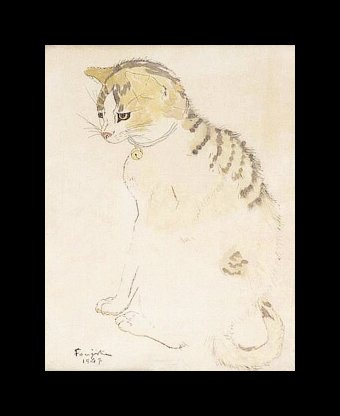

The amount of work that he produced throughout his life is prolific, yet, there are not many substantial museum collections in existence, with the exception of collections in museums in his native land, Japan. This means that there must be an enormous number of paintings by Foujita in private collections. In 1998 a couple took a painting to the Antiques Road Show (a television program where members bring possessions such as paintings and china for appraisal by experts). The couple gasped when they were told that their small painting of cats was a Foujita and was worth in the region of $85,000. In 1990 a painting by Foujita titled ‘The Young Girl in the Park’ sold for $5.5 million at Christies in New York.
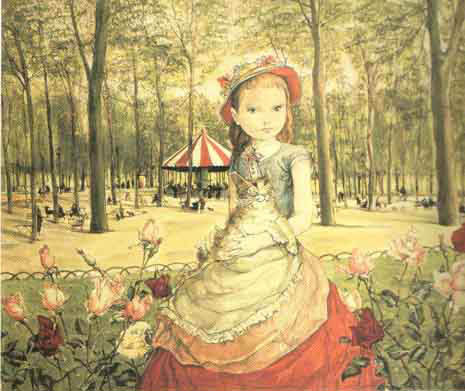
Many of Foujita’s paintings of cats and young woman are very simple in nature, but do not be deceived by the simplicity, for they could be worth a lot of money. The next time you are tempted to throw away the painting of a cat which is in your attic or which you may have inherited, take a second look at the signature…it could be a Foujita!
Reviews
1,217 global ratings
5 Star
4 Star
3 Star
2 Star
1 Star
Your evaluation is very important to us. Thank you.
